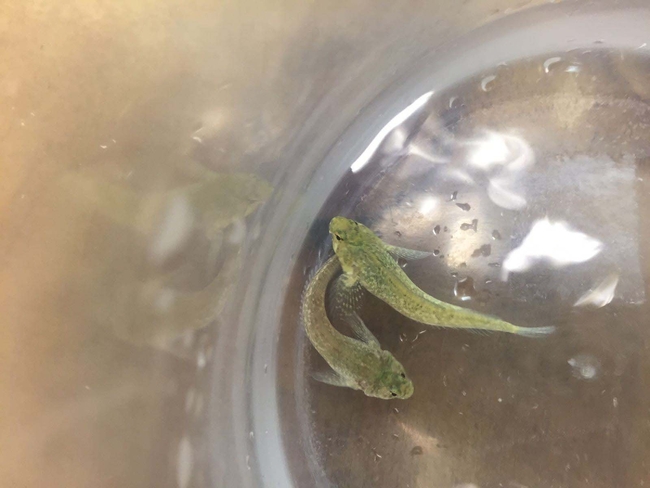INFLOW – using INtertidal Fish to study life’s tolerance to LOW oxygen
INFLOW was New Zealand-German collaboration between the Leigh Marine Laboratory (LML) in Leigh/Warkworth and the Leibniz Center for Tropical Marine Ecology (ZMT) in Bremen, the School of Biological Sciences (SBS) at the University of Auckland, the Alfred Wegener Institute for Polar and Marine Research in Bremerhaven and the Botany Department at the University of Bremen were involved as additional partners. This project was the first to investigate the underlying mechanisms of hypoxia tolerance (HT) in related hypoxia-tolerant and hypoxia-sensitive intertidal fish. A comparison between warm-temperate species (triplefins, New Zealand gobies) and tropical species (clownfish) provides a number of new results. This has resulted in a publication in advance (method paper), a completed thesis on the German side, an as yet unfinished thesis on the New Zealand side and a publication submitted for review.
The results showed, among other things, that the protection factor (e.g. in an anemone) does not lead to a significant reduction in the routine and resting metabolic rate (RMR Routine Metabolic Rate; SMR Standard Metabolic Rate) in clownfish, although this effect has been shown for other fish species living together with corals. The oxygen concentrations inside the anemone drop sharply during the day, but especially at night. They are always below 80%, with an average value of 60%, however, this measurement method hardly reveals any significant differences between daytime and nighttime. It could also be shown that the clownfish always stay inside the anemone at night and fall into a resting mode. In this mode, they hardly move or do not move at all during the entire night. Experiments with Amphiprion frenatus under oxygen deficiency conditions were designed to demonstrate hypoxia tolerance. The results for oxygen saturations below 50% in the water indicate a clear drop in respiration rates in both adults and juveniles. In addition, the resting metabolic rate (SMR) was measured using an identical method to make the results comparable. The resting metabolic rates of the adult and juvenile fish are at a similar level. Both experiments were performed with an intermittent-flow respirometer and took place in the MAREE of the ZMT, Bremen.
In 2014 and 2015, 14 short-term experiments were carried out with two triplefin fish species, Bellapiscus medium and Forsterygion lapillum. The Standard Metabolic Rate SMR and the Routine Metabolic Rate RMR (12 h measurements overnight) were determined by gradually lowering the O2 concentration with nitrogen, from 100% to 75, 60, 50, 40, 30, 20 %, up to the so-called Pcrit. Hypoxia experiments (8h measurements over the day). At the beginning of 2016, the focus of the experiments was on long-term hypoxia.This means that the animals were exposed to a constant but lowered oxygen concentration overnight (> 12h).
Publication:
https://link.springer.com/article/10.1007/s00360-019-01216-w
Thesis:
https://researchspace.auckland.ac.nz/handle/2292/48835





